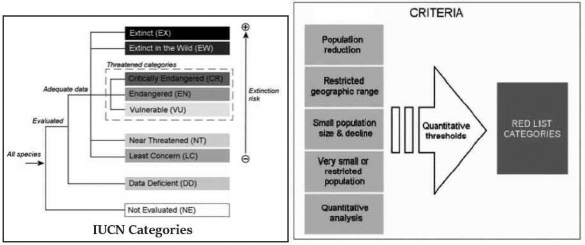9.2. THE RED DATA BOOK
Species judged as threatened are listed by various agencies as well as by some private organizations. The most cited of these lists is the Red Data Book.
It is a loose-leaf volume of information on the status of many kinds of species. This volume is continually updated and is issued by the International Union for Conservation of Nature (IUCN) located in Morges, Switzerland.
“Red” of course is symbolic of danger that the species both plants and animals presently experience throughout the globe.
The Red Data Book was first issued in 1966 by the IUCN’s Special Survival Commission as a guide for formulation, preservation and management of species listed.
In this Book, information for endangered mammals and birds are more extensive than for other groups of animals and plants, coverage is also given to less prominent organisms facing extinction.
The pink pages in this publication include the critically endangered species. As the status of the species changes, new pages are sent to the subscribers.
Green pages are used for those species that were formerly endangered, but have now recovered to a point where they are no longer threatened. With passing time, the number of pink pages continue to increase. There are pitifully few green pages.

9.2.1 IUCN CLASSIFICATION OF CONSERVATION PRIORITY
